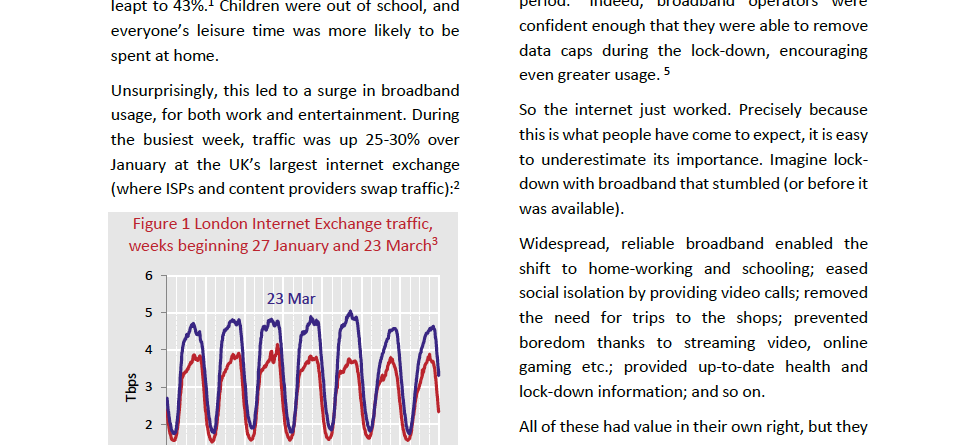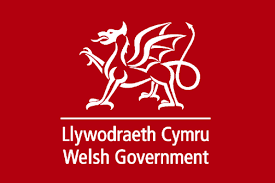BSG Paper ‘COVID & accelerated digitalisation: the implications for broadband’
The UK is undergoing a fundamental re-evaluation of the value that telecoms bring to the UK economy. The pandemic has consolidated the pivotal role that digital connectivity plays in underpinning the economy and wider society. Broadband and mobile connectivity have been the backbone of the accelerated drive to digital adoption, as the paper by Robert Kenny of Communications Chambers sets out.
BSG sponsors have successfully scaled-up core capacity to address new surges and peaks in demand and the new patterns of home-working, whilst simultaneously being constrained by a more distributed workforce and the closure of many call centre functions during periods of extended lockdown. It is, therefore, an even greater achievement that, against this backdrop, the UK’s broadband industry has nearly doubled full fibre coverage in 2020.
With growing evidence that patterns of remote working are becoming synonymous with business as usual, and digital connectivity potentially nudging closer as a default option for the delivery of a broader range of public services, the case has never been stronger for an accelerated nationwide fibre and 5G infrastructure build-out to provide the additional capacity and service performance required in the future.
We urgently need to secure the transformational benefits that more future-proofed networks will offer, as set out in the government’s 2025 objectives. Both the November 2020 Spending Review statement and the accompanying National Infrastructure Strategy(NIS) are predicated on the broadband industry’s ability and appetite to deploy, with the right encouragement and support, gigabit-capable networks to circa 80% of the UK. This will constitute the most substantial part of the minimum 85% coverage target now set for 2025. Industry stands ready to respond to this shared ambition and to get as close as possible to 100% coverage. If there is an equal readiness by the government to ensure rapid adoption and implementation of the enabling barrier-busting legislation alongside other investment-friendly measures such as extended business rates relief on digital networks, the 2025 vision will be brought much closer to fruition. BSG reports outline these measures in our BSG response to the recent DCMS Select Committee inquiry.
Integral to the above vision is an effective allocation of the £5 billion government funds for the hardest-to-reach areas to bring future-proofed broadband to all by 2025. The £1.2bn allocation for the period 2021-2025 set out in the NIS is a minimum spend and does not preclude further tranches of the £5 billion funding from being drawn down during this period. Achieving the right methodology for future procurements will also be a key determinant of success, as well pro-active marketing campaigns nationally and regionally to drive awareness and take-up of new gigabit-enabled services as they come onstream, as highlighted in the recommendations in the BSG-commissioned WIK report.
Policymakers now need to take a sufficiently broad and balanced regulatory perspective to ensure that industry continues to invest in a climate of economic uncertainty and constraints. The implementation of a wholesale regulatory regime that incentivises investment, alongside the enabling measures outlined above, will need to go hand in hand with an appropriately balanced consumer protection regulatory regime. Establishing sufficiently robust safeguards for mobile and broadband consumers whilst avoiding any disproportionately costly and prescriptive regime for industry sits at the heart of this equation. Policy and regulation need to be looked at holistically so that the priority pro-investment levers are not unintentionally eroded by any regulatory interventions elsewhere along the critical path to 2025.






